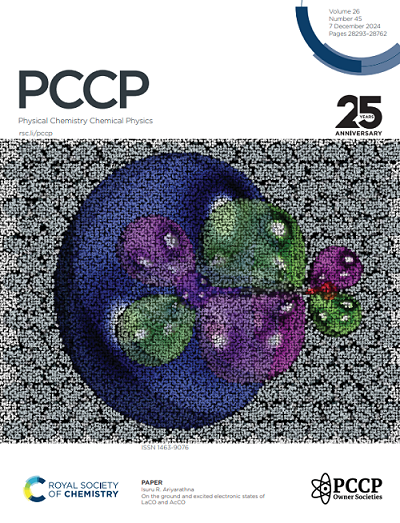Structural, strength and fracture mechanisms of superconducting transition metal nitrides TM3N5 (TM = W and Mo)
IF 2.9
3区 化学
Q3 CHEMISTRY, PHYSICAL
引用次数: 0
Abstract
Transition metal (TM) nitrides are recognized for their outstanding and highly desirable properties, categorizing them as a class of multifunctional material with diverse industrial applications. In particular, the newly synthesized W3N5 is notable for its exceptional ultra-incompressibility (406 GPa for bulk modulus), remarkable hardness (34 GPa), and superconductivity (9.4 K), positioning it as a potential ultra-hard superconductor. We performed a comprehensive study of the structural, electronic, and mechanical properties of TM3N5 (TM = W and Mo), emphasizing their behavior under shear deformation and lattice instability. The distinct ionic TM-N and covalent N-N bonding characteristics in TM3N5 were characterized through a topological analysis of charge density. Compared to W3N5, the superconducting transition temperature of Mo3N5 at ambient pressure was estimated to be 14.8 K. Both compounds demonstrate impressive uniaxial compressive strengths of -265.7 GPa for W3N5 and -216.5 GPa for Mo3N5, which are comparable to that of the diamond (-223.1 GPa) along the [100] direction. The superior mechanical strength of TM3N5, especially in W3N5, was manifested by the calculated ideal tensile strengths exceeding 40 GPa along the main crystal axes of [100], [010], [001], and [101]. However, W3N5 shows a considerably lower Vickers indentation shear strength of 16.2 GPa along the (110)[1-10] direction when compared to the well-known WNx, indicating a limitation in its shear fracture resistance and hardness, as suggested by the determined Vickers hardness of 22.0-22.5 GPa. Finally, the lattice instability and fracture mechanisms of W3N5 under indentation shear deformation were clarified through in-depth analyses of atomic bonding and electronic structure evolutions.求助全文
约1分钟内获得全文
求助全文
来源期刊

Physical Chemistry Chemical Physics
化学-物理:原子、分子和化学物理
CiteScore
5.50
自引率
9.10%
发文量
2675
审稿时长
2.0 months
期刊介绍:
Physical Chemistry Chemical Physics (PCCP) is an international journal co-owned by 19 physical chemistry and physics societies from around the world. This journal publishes original, cutting-edge research in physical chemistry, chemical physics and biophysical chemistry. To be suitable for publication in PCCP, articles must include significant innovation and/or insight into physical chemistry; this is the most important criterion that reviewers and Editors will judge against when evaluating submissions.
The journal has a broad scope and welcomes contributions spanning experiment, theory, computation and data science. Topical coverage includes spectroscopy, dynamics, kinetics, statistical mechanics, thermodynamics, electrochemistry, catalysis, surface science, quantum mechanics, quantum computing and machine learning. Interdisciplinary research areas such as polymers and soft matter, materials, nanoscience, energy, surfaces/interfaces, and biophysical chemistry are welcomed if they demonstrate significant innovation and/or insight into physical chemistry. Joined experimental/theoretical studies are particularly appreciated when complementary and based on up-to-date approaches.
 求助内容:
求助内容: 应助结果提醒方式:
应助结果提醒方式:


